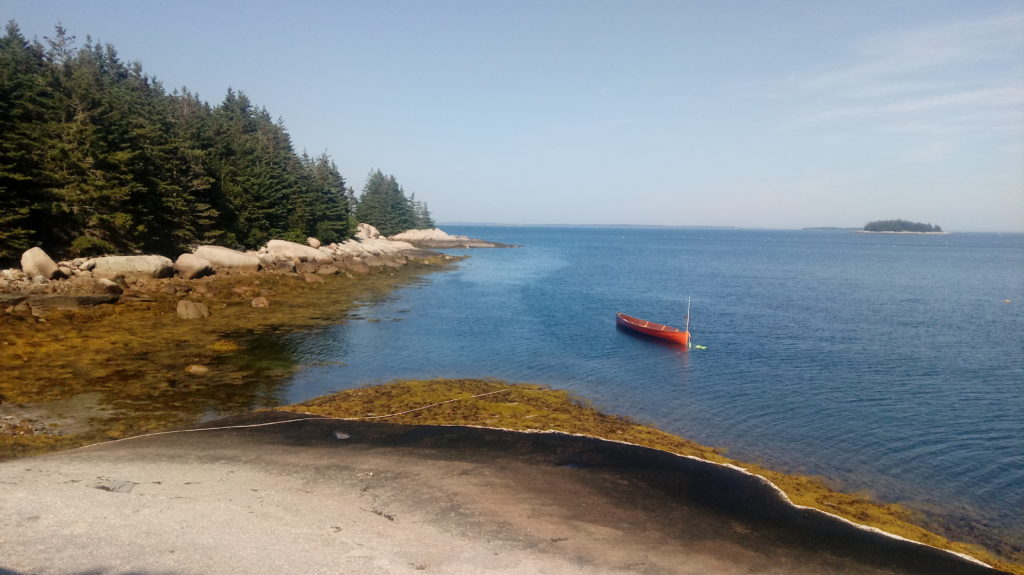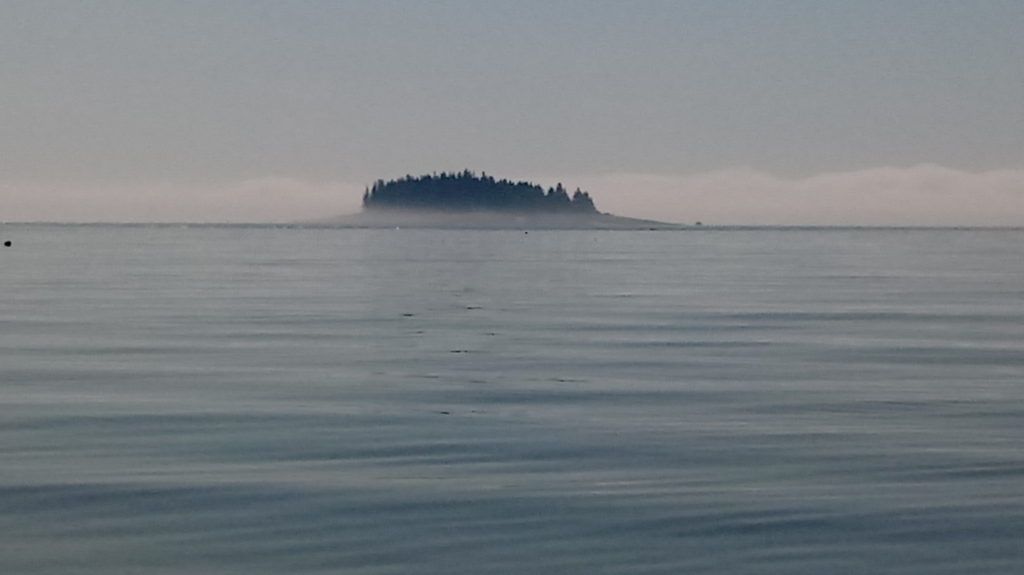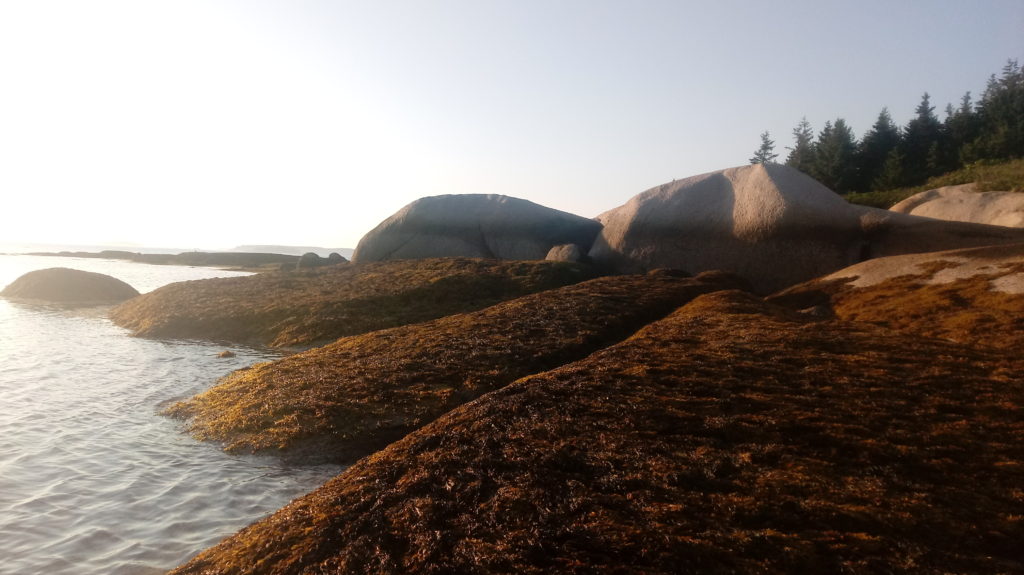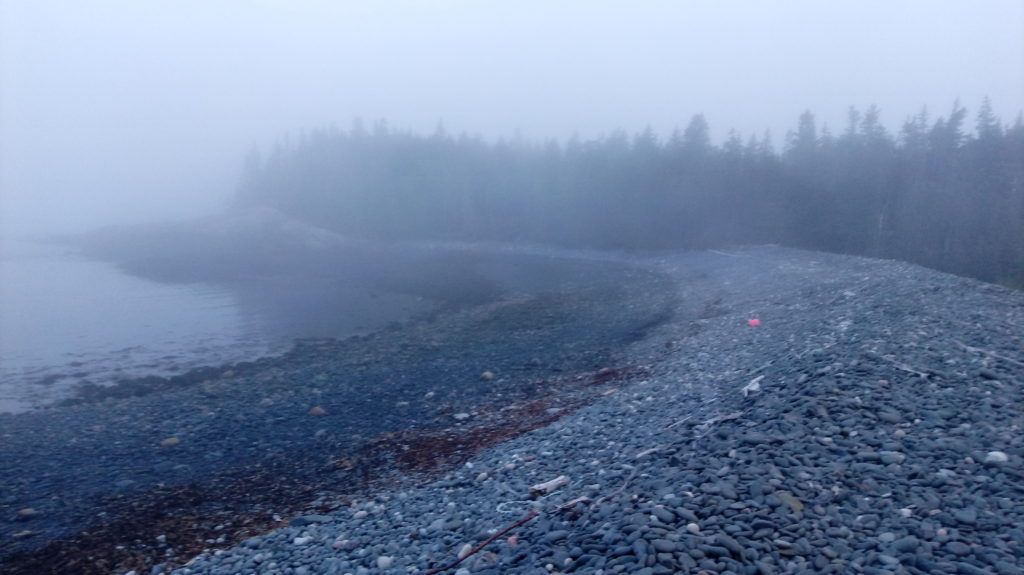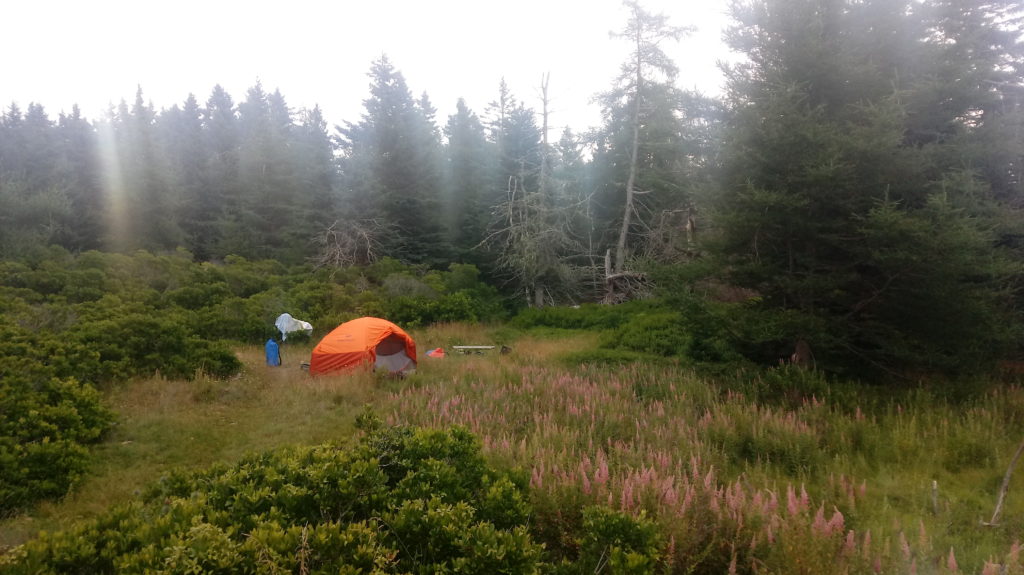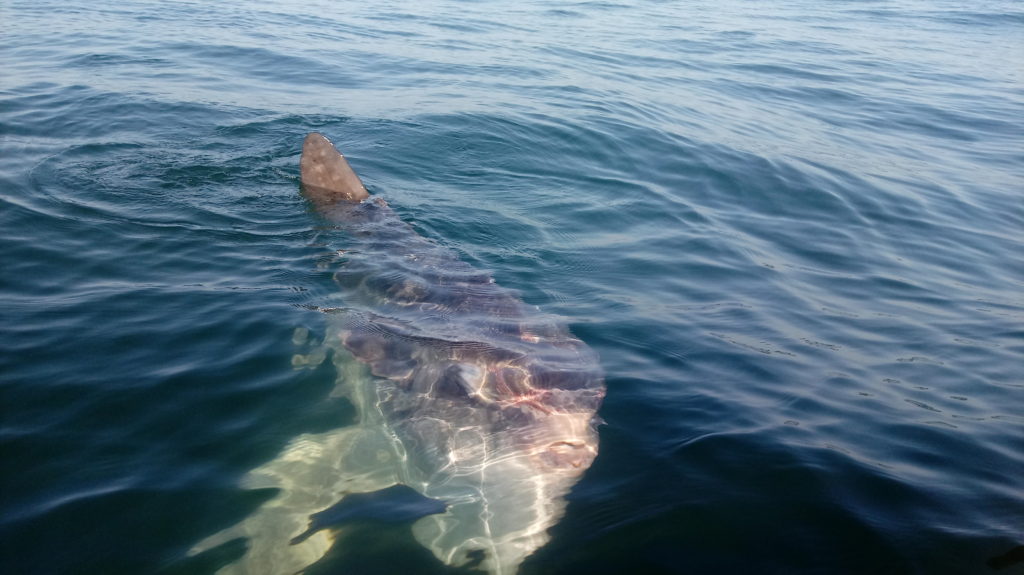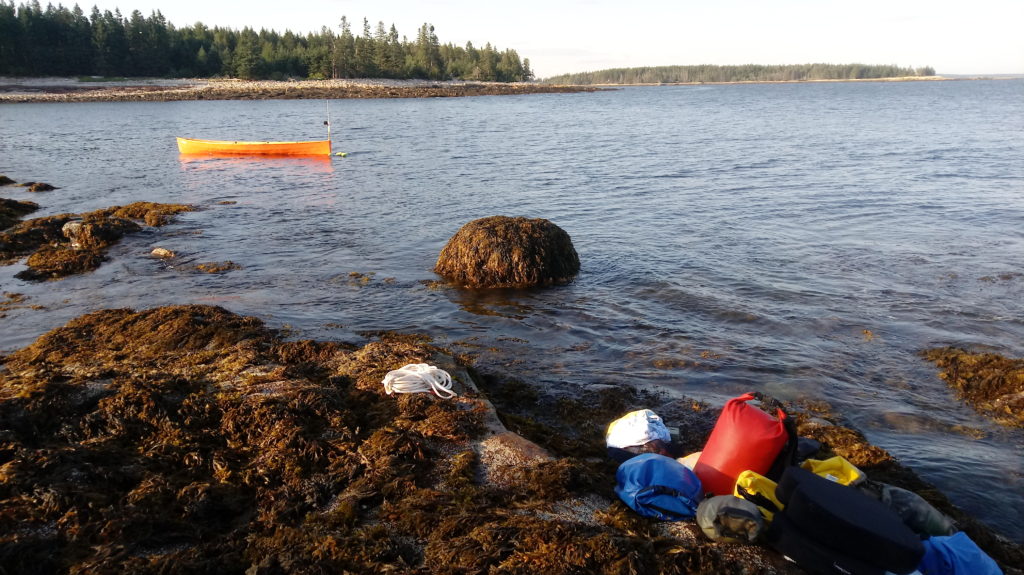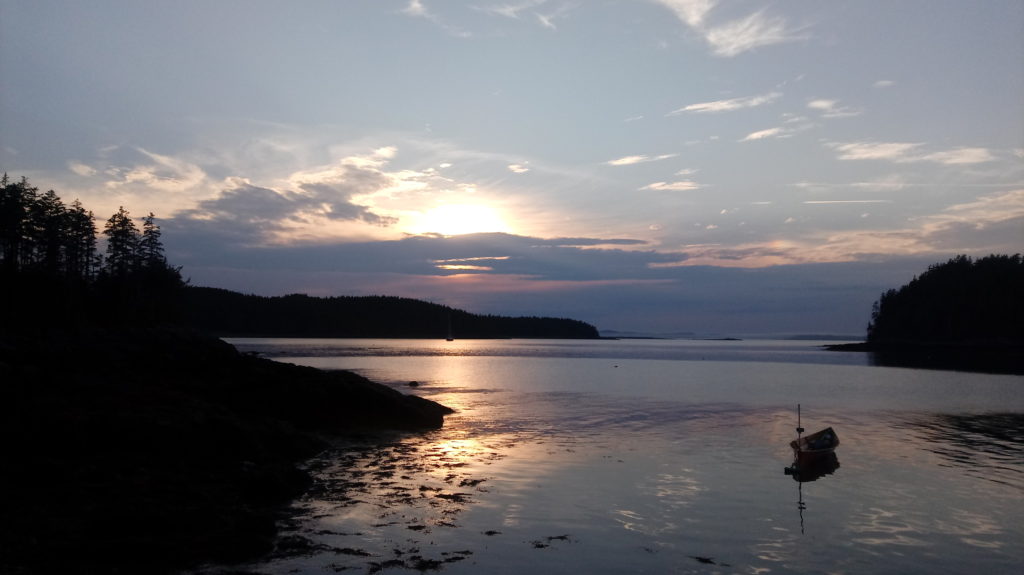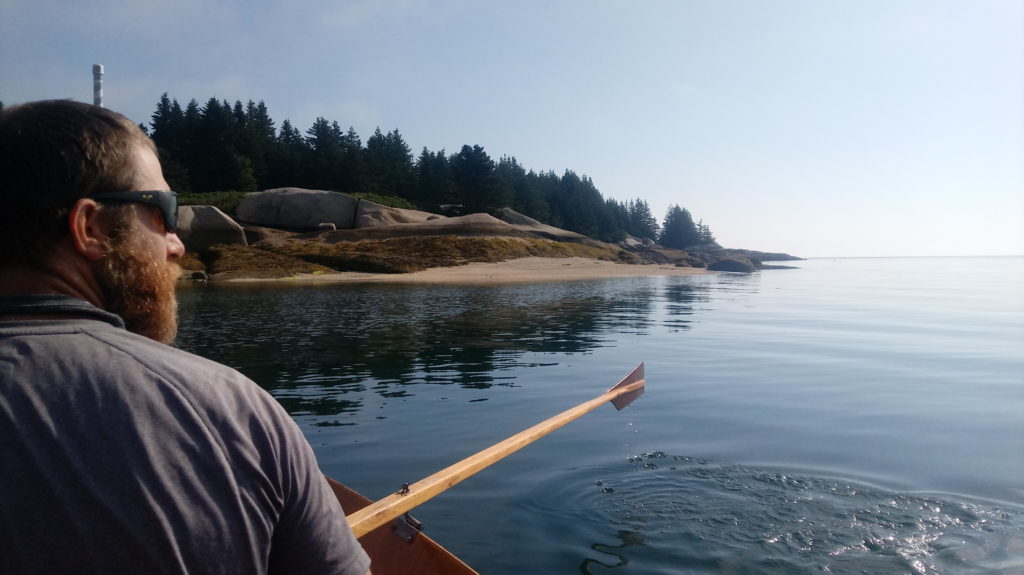
In late August of 2018, we completed a thru-row of the Maine Island Trail, setting out from Kittery on Maine’s southern border in our 21′ rowboat NORPPA, and ending 10 days later in Lubec, Maine on the Canadian border. The article below appeared in the Maine Island Trail Association’s (MITA) Janurary 2019 member newsletter. Also, Leigh made their journey a key element of this Story Map.
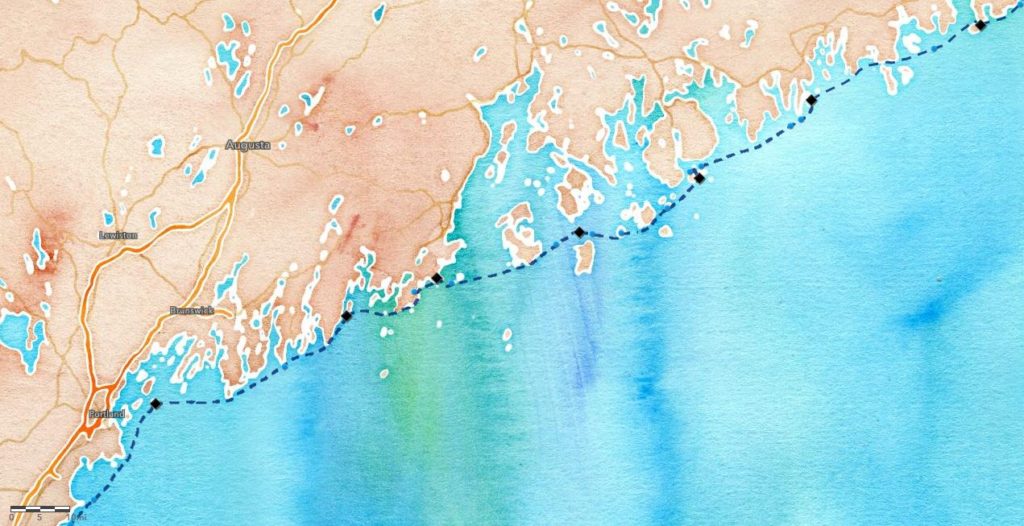
On a sunny day in late July, We set out from Pepperrell Cove in Kittery in our bright orange 21′ woooden rowboat, not intending to touch the mainland again until reaching Lubec. It would be the longest human-powered journey either of us had ever done, something for which we had spent the last year dreaming and preparing. We planned to camp every night on a MITA island, and had brought food for 12 days. We hoped to put in 25-30 statute miles per day (weather permitting), along a route that was 260 miles long.
We had begun to prepare last summer, making several 20-40 mile journeys in and around Penobscot Bay from our home base in Belfast. We row a Savo 650-D, a double sliding seat rowboat designed by Puuvenepiste in Finland and built by Walter Baron in Wellfleet, MA. On these trips we had experienced both the steep, fast chop that the bay can whip up almost instantly, and also dense fog. Of the two, we learned that fog was much more treacherous. (The constant sound of invisible lobster boats in the vicinity of your small wooden boat induces a slow-burning stress punctuated by moments of true terror when the sounds come near.) From each of our shorter trips we learned something – how the boat handled in rough water, how much water we needed for a day, and most importantly, to never set out into the fog under the assumption that it will soon lift.
The trip this summer was everything we hoped it would be…beautiful, challenging, a feast of adventure for our hungry souls. We picked our MITA campsites as we went, choosing sites based mostly on the mileage we wanted to achieve each day (and trying to avoid ones that sounded especially mosquito-y or hard to land on from the MITA description). The list of islands we stayed at, in order, were: Trott (Cape Porpoise), Jewell (Casco Bay), Bar (Muscongus Bay), Cylends (Seal Harbor), Harbor (Stonington), Crow (Cranberry Isles), Bois Bubert (Milbridge), and Cross (Cutler). We stayed the last night of our trip at the Sunset Point RV Park in Lubec, which had tent sites right on the water.
It may seem that day after day of getting in the same boat and rowing for 6-9 hours would get monotonous but we never grew tired of getting in the boat to start another day of rowing. Of course, we also never grew tired of having the night’s camping island slowly grow larger in our rearview mirror at the end of the day as we wearily pulled the oars through the last mile of the day. We were deeply thankful for the ability to stay on a different island every night, and relished the excitement of exploring each new pardise that the trail offered up.
Our days settled into a rhythm that we quite enjoyed. Wake up, eat muesli, pack up all our gear, load the boat, launch sometime between 8-9, row to the next island, unload, set up camp, eat dinner, write in our log, read some Sarah Orne Jewett or Rachel Carson, and fall into a deep sleep. During the day, rowing was puncuated by breaks every 30-45 minutes where we would take turns stopping to eat, drink, apply more sunscreen, etc. Many bags of beef jerky, dried apples, Clif bars, and Aussie-style red licorice were consumed.
The average day started with flat calm conditions that changed to 4’ chop around 1pm when the winds picked up out of the southwest. We were glad we had chosen to go south to north along the coast, or these prevailing afternoon winds would have seriously slowed our progress. Along the way We were quite surprised to spot several ocean sunfish (google this fish if you’ve never seen one – it’s a bit like a giant alien pancake with wings). As we got further downeast we spotted puffins a few times, eliciting joyous shouts and momentary stops to rowing. And Maine’s infamous summertime fog was an on-again off-again problem throughout the journey.
There were two days in particular when we launched in clear weather, only to be swallowed by the fog soon after. Each time it happened we tried to objectively weigh the risks of continuing on, with the risks of trying to land along unknown shorelines. We had done our best to prepare for the fog, bringing along a homemade radar reflector attached to the stern, an idea gleaned from a local Coast Guard study on the best means for kayaks to make themselves visible on radar. Our reflector consisted of a 1.5-inch PVC pipe stuffed with aluminum foil, wrapped with reflective tape and standing about 5′ off the water. Additionally, we had our VHF radio, and were making PAN-PAN announcements on Channel 16 every 30-45 minutes while in the fog. With these precautions and a great deal of luck, we didn’t have any close encounters with lobster boats in the fog. We definitely don’t encourage rowing in the fog if it can possibly be avoided.
Our last day of the trip was an incredibly fast row along the Bold Coast, with an incoming tide pulling us east-northeast with 2-3 mph of current. We came into Lubec a couple hours before high tide, which actually turned out to be a time of minimal current. As we sat outside eating victory burgers that night in Lubec, we watched gray seals catching rides on the outgoing tide as it surged through the narrows. They would swim out of the current after a hundred yards or so, catch the counter current along the shore back up to their starting point and ride down again, seemingly for the pure joy of being part of the rushing flow. We could relate.

